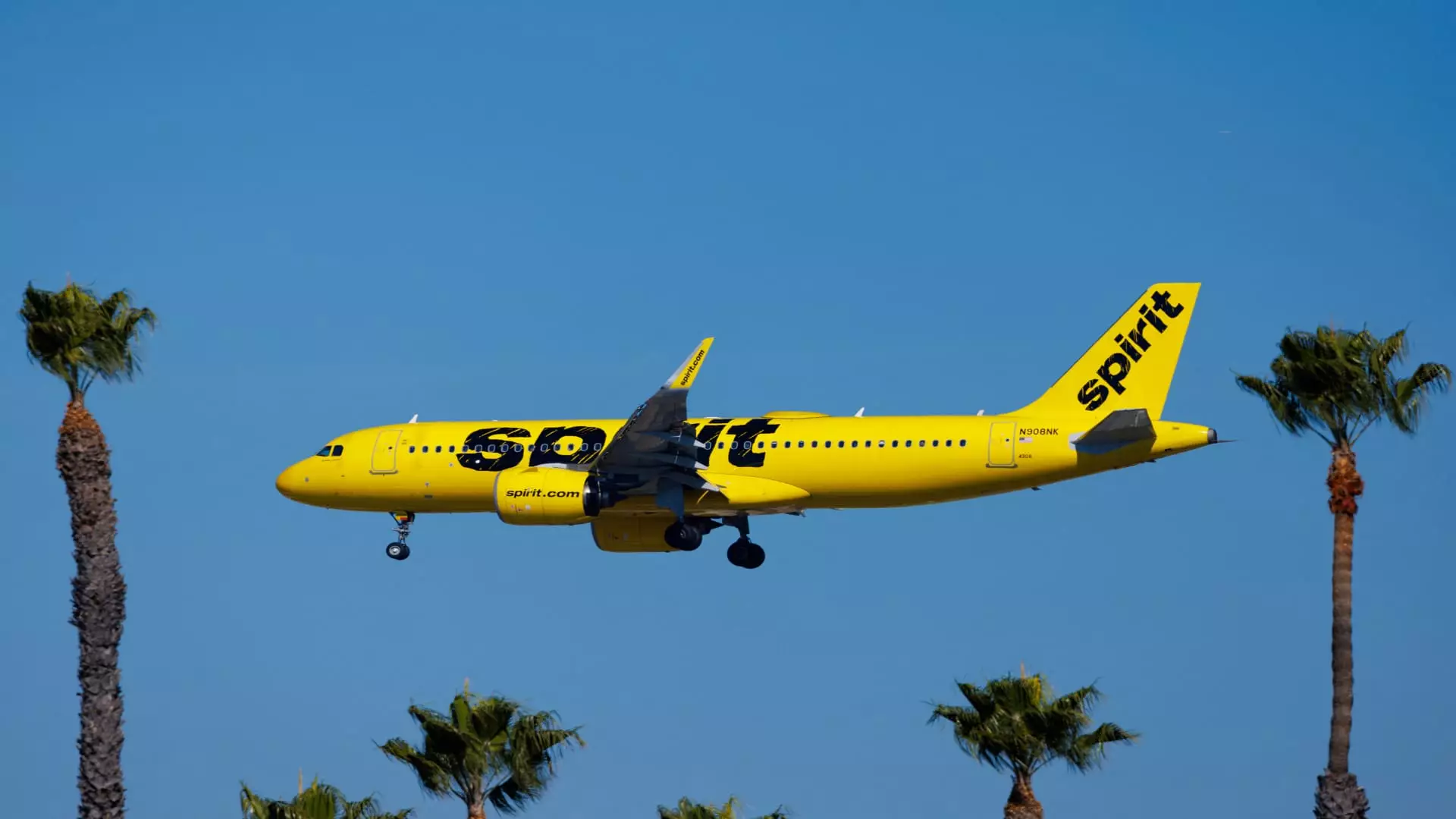In a dramatic twist for Spirit Airlines, shares plunged to an unprecedented low this past Friday amidst reports suggesting the airline is contemplating filing for Chapter 11 bankruptcy protection. This news carries significant implications for a carrier that has traditionally positioned itself as a budget-friendly option for cost-conscious travelers. With a crucial deadline looming to renegotiate over $1 billion in existing debt, the financial turbulence hints at a critical juncture in the airline’s operational future.
The bankruptcy filing, if executed, would send shockwaves through the airline industry and fundamentally alter the competitive landscape. Spirit Airlines, recognized by its vibrant yellow aircraft, was previously known for its affordable fares and unembellished flight experience—attributes that resonated well with many passengers prior to the pandemic. However, as the industry grappled with unprecedented challenges, Spirit’s operational competence came into question, leading to a decline that has left an indelible mark on its brand.
Once a symbol of low-cost travel, Spirit Airlines thrived by offering no-frills services that catered to a budget-savvy demographic. However, the onset of the COVID-19 pandemic shifted consumer behavior dramatically, and airlines of various scales scrambled to adapt. Post-pandemic, established carriers began mirroring Spirit’s tactics by introducing their own budget tiers, effectively diminishing Spirit’s unique selling proposition.
Amid these competitive pressures, a failed acquisition by JetBlue Airways—a deal blocked by a federal judge on antitrust grounds—especially hurt Spirit’s strategic positioning. Hopes for increased competitiveness through merger synergy were dashed, leaving Spirit to navigate its challenges independently. Alongside this setback, the airline faced additional hurdles, such as a significant Pratt & Whitney engine recall, contributing to mounting operational difficulties and delayed recovery.
Spirit Airlines’ financial trajectory has been decidedly downward since 2020, exacerbated by a nearly $193 million loss reported in the second quarter of this year. In a bid to stabilize its finances, Spirit initiated a rigorous cost-cutting plan, including measures like furloughing pilots, trimming flight schedules, and postponing orders for Airbus jetliners. These efforts reflect a desperate search for financial viability amidst ballooning operational costs and wavering revenue streams.
As pointed out by Brandon Oglenski, an analyst from Barclays, the airline has reduced its growth plans for November and December by approximately 17%. Such drastic revisions signal an acknowledgment of ongoing challenges, positioning Spirit in a precarious balancing act between operational sustainability and maintaining consumer interest.
Amid the chaos, Spirit’s leadership remains optimistic, with CEO Ted Christie asserting a commitment to revamping business practices and engaging with bondholders in hopes of ameliorating the financial situation. “We remain engaged in productive conversations with our bondholders,” Christie stated, indicating that management is actively pursuing refinancing options to avert bankruptcy.
However, skepticism lingers among investors and analysts alike as the stock price has plummeted by nearly 90% year-to-date. Following Friday’s announcement, Spirit’s shares fell more than 24%, reaching an alarming low of $1.69. This trend is not merely a reflection of investor apprehension but underscores a broader concern about the viability of budget airlines amidst rapidly changing economic conditions.
While Spirit Airlines navigates its difficulties, it’s essential to consider the ramifications this situation presents for the larger airline industry. The surge in Frontier Airlines’ stock, which saw a 16% increase on the same day, furthers the narrative of how competition nuances can shift drastically based on airline performance and consumer sentiment.
With competitive forces recalibrating in real-time, other airlines now closely monitor Spirit’s responses. The potential fallout from a bankruptcy filing could set a precedent not only for Spirit but could also send ripples across the budget airline sector.
Spirit Airlines stands at a critical crossroads, faced with immense challenges that could redefine its future trajectory. As the airline grapples with pressing financial dilemmas, its journey will likely provide key insights into the resilience and adaptability required for survival in the highly competitive aviation industry. The unfolding situation deserves close observation, as it could reshape the very dynamics of budget travel for years to come.


Leave a Reply